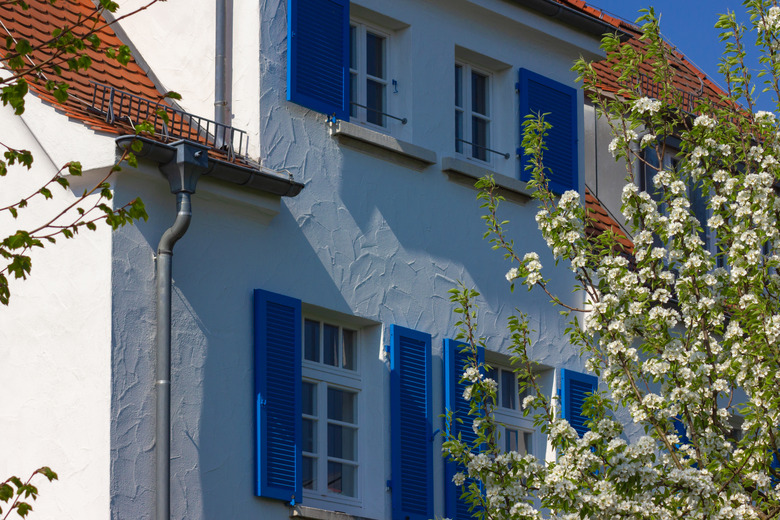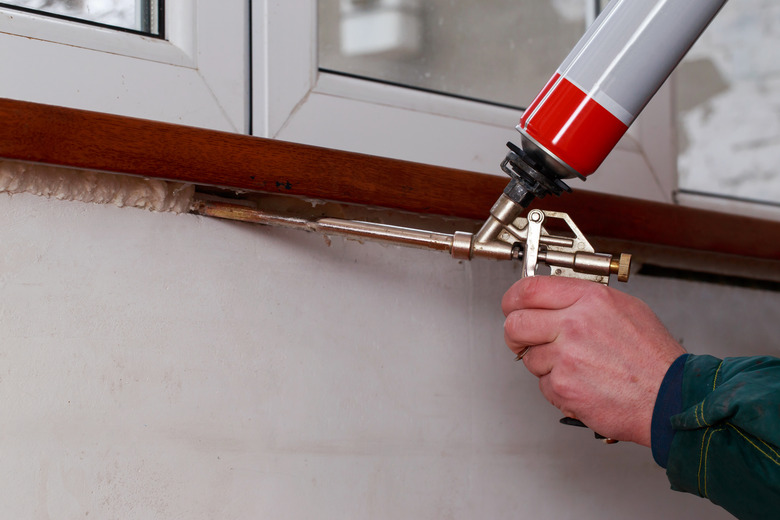A Homeowners Guide To Replacement Windows
Windows play a role in the comfort—or discomfort—of a home, as well as its energy efficiency. Fortunately, the design of newer windows are vastly improved over older models, and installing new windows can make a drastic difference in your home, in terms of comfort, style, and energy-consumption costs. But those improvements come with a price: replacing existing windows is a big-ticket purchase that can easily run $300 to $1,500 per window installed.
If you are considering new windows there are a number of decisions you will need to make.
Do I Need New Windows?
Do I Need New Windows?
There are a number of reasons to switch out old windows for new ones.
- The windows don't open or close properly.
- The window frame is damaged or warped.
- On double-pane windows, there is condensation between the panes,which means the seal is broken.
- The windows are old single-pane units that waste energy.
- You are tired of scraping and painting wood windows.
If the problem cannot be repaired to your satisfaction, it may be time for new windows.
What Are My Options?
What Are My Options?
There are two types of replacement windows: sash-only replacement and full-unit replacement windows. Sash-only units are usually simply called replacement windows, and they are a good option if the surrounding window frame is in good shape. In this type of installation, the sash, the part that holds the panes of glass, is removed and a new one put in its place. The whole job takes place from inside the house and there is minimal disruption to the area around the window.
There are replacement kits available for the homeowner who wants to tackle the installation. Just be sure to follow the directions carefully, especially when taking measurements. Housing construction is fairly standardized, but window measurements can be tricky, particularly on older houses.
Some window manufacturers offer replacement services. The advantage with a service is that the same company takes the measurements, manufactures and installs the window.
If the existing window frame is damaged, you will need a whole new unit that includes the sash and the frame, usually called a construction window. Installation involves removing the interior molding and exterior siding around the window. The installer will also add new flashing to divert water. Once the window is in place, he will make sure it is level and plumb before it is attached to the house framing. He should use expanding foam made for window installations to seal the space between the window frame and the house framing.
Installing a construction window is usually the more expensive project, but it does give you more options in terms of the material for the window frame and the glazing. Construction windows are usually installed as replacements by professionals, although homeowners with excellent carpentry skills may be able to tackle it.
Window Frame Options
When people talk about windows, they usually identify them according to the material the frame is made from. Wood and vinyl windows are the most popular, but there are others.
- Wood is the benchmark window material. The problem with wood windows is that they need to be painted occasionally. Some manufacturers apply a vinyl or aluminum cladding to the windows to reduce the maintenance chores. If you like the look of wood, there are products that have cladding on the exterior but exposed wood on the interior.
- Vinyl window frames are maintenance free. If you were to cut through a vinyl frame to expose its interior, you would see a number of hollow cavities. These cavities give the window its structural strength. Some manufacturers fill the cavities with foam insulation to improve the window's thermal performance.
- Fiberglass frames are also maintenance free. The interior of the frames can contain foam insulation that provides excellent thermal performance.
- Composite frames are made from a number of different materials that are usually proprietary to the manufacturer. They are also a maintenance-free alternative.
- Aluminum frames are not recommended for cold climates because they conduct heat at a fast rate.
Glazing Options
Window glazing—the glass itself—has undergone tremendous improvement in the past 25 or so years. Many of the more energy-efficient windows contain a combination of new design features:
- Multiple panes of glass. Today's windows contain two and sometimes three panes of glass that are sealed within the sash. The airspaces contribute to the energy performance of the windows.
- Inert gases between the panes. Manufacturers fill the space between panes with an inert gas, such as argon. The gas improves the insulating ability of the air space.
- Special coatings. Microscopic low-emissivity coatings—better known as Low-E coatings—are applied to the glass. They can help keep warm air inside the house in cold climates or warm air outside in hot climates.
- Suspended films. Nearly invisible films can be suspended in the space between the panes of glass. With this design, one air space becomes two, improving the overall thermal value of the window.
- Tints. These products can help prevent unwanted heat gain in hot climates.
Choosing the Right Windows
Choosing the Right Windows
There is no right or wrong way to decide which type of window will work best in your home. Many people start by choosing a frame material first, often based mostly on aesthetic preferences and the upkeep profile of the material. The biggest decision, though, involves glazing options. You can choose an energy-efficient window by matching the glazing options to your local climate. For cold climates, you want a window that will help keep heat inside. Where air-conditioning is a major expense, you want to keep the heat outside. Or maybe you have both heating and cooling costs that you want to keep under control. A number of window ratings can help you make this decision.
If you live in a cold climate, look for windows with low U-values, which is a measure of heat transmission. The lower the number, the better the window is at stopping heat loss. A U-value of 0.27 or lower is recommended for cold climates. U-values should reflect the thermal qualities of both the frame and the glazing.
In hot areas, consider the solar heat gain coefficient (SHGC). This will be a number between 0 and 1. A low SHGC helps prevent unwanted heat gain from sunlight and reflected surfaces.
You can find this information in the manufacturer's literature or on a sticker attached to the window. The energy efficiency of many windows is certified by the National Fenestration Ratings Council, an independent testing body.
Energy Star, a voluntary program of the Environmental Protection Agency, recommends choosing windows based on local climate. Their recommendations are a good place to start your search for energy-efficient windows.

